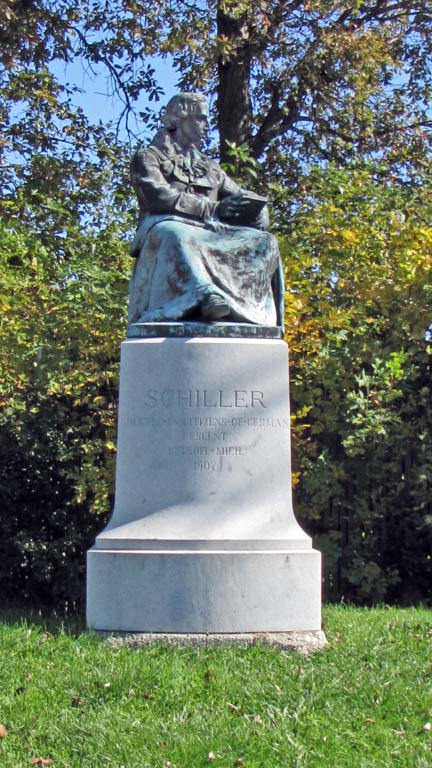

Schiller is one of the key figures in the history of German philosophic thought. He is widely recognized as one of the most accomplished poets and dramatists to write in German. Indeed, if you are to become very familiar with the history of modern Germanic thought, you will likely read many of Schiller’s works.
He was born November 10, 1759 in Marbach, Wűrttemberg, into a family of six children. His father was a military doctor. After completing primary school, he was strongly encouraged at age 13—against his own wishes—to enroll in the local military academy. He considered careers in both law and medicine, but while studying at the military institute, he became very interested in classical literature and the ideas of the Greek and Roman thinkers. He also developed an interest in drama, and in 1782, wrote his first play entitled The Robbers. This play was performed in Mannheim and he left his military post to see it. His military superiors found out about his playwriting and prohibited him from pursuing such interests. This greatly upset him so he went AWOL and moved to Mannheim where he lived under an assumed name for some time.
He continued his studies of literature and drama. He considered becoming an historian and drafted a history of the Thirty Years War, the Seventeenth century conflict that involved most European kingdoms. However, he met Johann Wolfgang von Goethe in Mannheim. They became friends with similar intellectual interests. Goethe encouraged Schiller to return to writing plays and he did so. Schiller is well known for the dramas he wrote, including William Tell and the Wallenstein cycle. His poetic hymn to job, An Die Freude, was used by Ludwig von Beethoven in the chorale component of the fourth movement of his Ninth Symphony. This is, likely, the most popular music written by Beethoven. Schiller wrote several important theses on aesthetics and, along with Goethe, establish blank verse as a German literary form. He died in Leipzig on May 9, 1805.
Germans were the most numerous European group in Detroit in the late Nineteenth and early Twentieth century. In 1900, about 45 percent of the city’s residents were first- or second-generation German immigrants. A group from Detroit’s large German community sought to commemorate the tremendous contributions of Schiller so they commissioned Herman Martzen to design the statue that you see. His composition shows a relaxed Schiller apparently contemplating a thought. It is quite a contrast to the nearby Belle Isle statue that shows a stern, foreboding Dante.
Julius Theodore Melchers was the first Detroit resident to become extremely well known for his achievements as a sculpture. Born in Westphalia, Prussia in 1826, he emigrated from Prussia in turbulent 1848 and studied at the École des Beaux Arts in Paris. Then he migrated to Detroit in 1855. He is best known, in Detroit, for his impressive statues of Jacques Marquette, Sieur de LaSalle, Antoine Cadillac and Gabriel Richard that were installed in Detroit’s City Hall in 1874. When that building was razed, Melcher’s statues were places on the greensward known as Ludington Place on Wayne State’s campus near the St. Andrews Episcopal Church designed by Ralph Adam Cram. I think that Herman Martzen came from Denmark to Detroit to study with Julius Melchers and then pursued his own career in Cleveland.
Sculptor: Herman Martzen
Date of Installation: 1907
Materials: Granite and bronze
Picture: Ren Farley
Description prepared: August, 2011
Return to Public Art and Sculpture
Return to Home Page